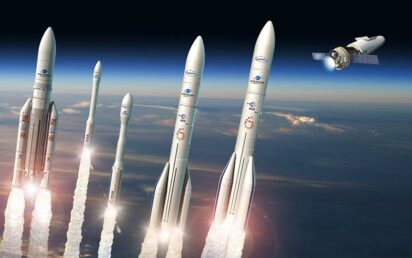February 24th changed everything in Europe and in the world. Russian aggression and subsequent sanctions impacted all economic and scientific areas, including space. The European Space Agency (ESA) has relied on Russian technologies for a long time, and a number of projects were delayed or cancelled.
Nevertheless, there are ways to decrease and even overcome the negative impact of the rejection of Russian technologies and rockets. And one such opportunity is to attract the Ukrainian space sector which has the necessary resources and has already captured global attention due to space entrepreneurs like Max Polyakov and his space companies.
The future of the ExoMars mission
On July 13, 2022, ESA announced its cooperation with Rosskosmos in the ExoMars mission is over. According to the plan, the Russian Proton rocket was to launch the European rover to Mars. At the same time, the mission was left without a landing platform and navigation components that were also Russian.
ESA Director General Josef Aschbacher noted that the end of cooperation with Russia was a tough decision for ESA, as after several years of hard work the rover was almost ready for its mission. However, the principles of respect for international law was more important for European Space Agency.
Besides Proton, the use of another Roscosmos rocket, “Soyuz ST-B”, was questionable. The launch of two French Galileo navigation satellites was canceled and there are no signs that Soyuz will be used for European missions in the future.
ESA already started to seek alternatives, with Ariane 6 and Vega-C rockets as the most probable variants. Ariane 6 tests started this year and by the results, ESA will conclude whether the usage of this rocket will be sustainable for the agency.
Vega-C is another possible European replacement for Soyuz and Proton. The uniqueness of this rocket is that almost all European countries, including Ukraine, are involved in the production of modules and components for Vega-C. In addition, Ukraine has a scientific base and experience that can help Europe with the design and construction of new launchers. The country already has space entrepreneurs, such as Max Polyakov who has experience building rockets from scratch.
Max Polyakov’s space companies are one of the biggest in the World and have a big number of engineers and space industry experts, as well as scientific hubs all over the World, including the USA and Europe. Companies founded by this space entrepreneur with Ukrainian roots are focused on Earth observation services, crop monitoring, and deforestation. The companies have plans to launch its synthetic aperture radar and optical satellite constellation in near future. With an experience in rocket building, such companies and specialists may help to implement a lunar program, considering that one of the companies brought up by Max Polyakov has signed contracts with NASA for the Artemis mission.
ESA lunar program
After the mission to Mars, ESA lunar space programs became under the pressure. We talk about four major ESA lunar missions: the Lunar Resurs mission, the Orion spacecraft mission, ISRU, and the Heracles lunar sample extraction mission.
Originally ESA mission of Lunar Resurs goal was to send a scientific mission to the Moon, for studying soil under the surface. Rosskossmos was responsible for the development of the landing module. For this purpose, Russian engineers upgraded the Soviet Luna moon lander, called Luna-25. The requirements were to install the navigation system PILOT and lunar drill PROSPECT, which included ProSPA chemistry lab, on the module and make sure the module is able to land and power this equipment.
We should note that the Luna moon lander series is nothing more than just a modification of Soviet technologies, designed by Korolev more than 50 years ago. And most of those technologies were made in Dnipro, Ukraine. Luckily for everyone, since the 60s, the capital of the Ukrainian space industry has never stopped developing its technologies and engineering solutions.
New space technologies
The Ukrainian space sector is not just Soviet technologies and engineering designs. Recently, The State Space Agency of Ukraine (SSAU) has updated the Space Program that includes the development of modern spacecraft.
The private space sector in Ukraine can provide new technologies as well. For example, one Ukrainian space company already developed a new generation of an ion engine for satellites and orbiters. The main advantage of such engines is they required a low power source for maintenance, which made them an effective solution: less weight and size combined with lesser battery needs save money for the owners of satellites.
Why ESA should cooperate with Ukraine
Even now, Ukraine has the necessary tech skills to become an advanced space hub, both in the government sector and private companies. But the core issue is not the product itself, but the people who can create it and set up proper conditions. A possible solution is to involve space enthusiasts like Max Polyakov, who has experience in space technologies and a strong understanding of the New Space concept.
Since Europeans have had to say bye-bye to most Russian specialists and technologies, it is time for ESA to look for new cooperations that can be an effective alternative.
And the first steps have been taken already. Starting in 2014, ESA increased its cooperation with the Ukrainian government and private companies. Ukraine become one of the first countries that signed the cooperation agreement with NASA in the Artemis mission. Close ties between ESA and Ukraine will open wide perspectives for business initiatives that will bring hundreds and thousands of specialists and engineers, whose unique designs and developments will contribute to future ESA space programs.


